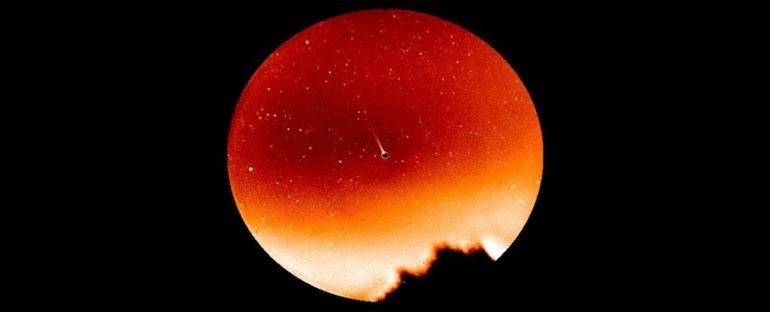The planets of the Solar System look a lot like a family. Jupiter’s the bossy dad, keeping everyone in line. Uranus and Neptune are the cool twins who only hang out with each other. Earth is the super-nerd try-hard. Pluto is the black sheep. And Mercury has a tail.
Yep. Almost like a big ol’ comet, tail streaming millions of kilometres away from the planet, glowing with faint orange-yellow light.
It’s all thanks to the planet’s position: Mercury is the innermost planet in our Solar System. It’s less than half the distance from our star than Earth, an average distance of 58 million kilometres (36 million miles).
At that distance, the small, dense, rocky world is constantly bathed in solar radiation and buffeted by solar wind.
Here’s Mercury and its sodium tail on June 4 through a 60 mm refractor and a 589.3/1.0 nm bandpass filter. The trailed star to the lower left is HIP 31650. pic.twitter.com/jlbKu5B3Oo
— Qiсһеng Ζһаng (@aciqra) June 14, 2020
Because Mercury has such a low mass – around 5.5 percent of Earth’s mass – it’s not particularly strong, gravitationally speaking. Nor is its magnetic field particularly strong: just 1 percent of Earth’s.
Therefore, the planet doesn’t have what we could reasonably call an atmosphere. Rather, it has a thin exosphere of mainly oxygen, sodium, hydrogen, helium, and potassium atoms kicked up by solar wind and micrometeoroid bombardment. That exosphere is gravitationally bound to the planet, but too diffuse to behave as a gas.
All of which is to say that the surface of Mercury has little protection against solar radiation and solar wind.
We know that solar radiation exerts pressure. We’ve even harnessed that pressure to propel a spacecraft equipped with a sail, a bit like the wind propels sailing ships. That radiation pressure is what gives comets their tails.
As comets move close to the Sun, the ice inside them starts sublimating, kicking up dust as it escapes the comet’s body. Solar radiation pressure pushes that dust into a long tail, while the gas is shaped by the magnetic fields embedded in solar wind; that’s why comet tails always stream away from the Sun – it’s not movement that produces the tail, but their proximity to the star.
Mercury does have ice, but that’s not what its tail is made of. The primary ingredient is sodium atoms; these glow when ionised by the Sun’s ultraviolet radiation, in a process similar to what drives Earth’s auroras.
As a result, the planet has the appearance of a comet, with a tail that’s been observed streaming nearly 3.5 million kilometres away from the planet.
Nov 10, 2020:
That’s not a comet but the tail of our inner planet Mercury “seen” from my backyard. This stacked image was exposed through a custom-made Sodium filter. The horizon is from the first exposure.#mercury #spica #yellow #sodium #sodiumtail #spica #astronomy #science pic.twitter.com/vjpK3RAkeA— Dr. Sebastian Voltmer (@SeVoSpace) November 15, 2020
Venus, occasionally, when the solar wind is blowing the right way, has a tail-like structure of ionised oxygen. Comets can have sodium in their tails. Jupiter’s moon Io is rich in sodium. And Earth’s Moon, bare and unprotected from solar wind, also has a sodium tail, although it’s not as large or lush as Mercury’s.
But Mercury’s tail is special for another reason. By studying it at different times during the planet’s orbit, we can learn about the seasonal variations in Mercury’s exosphere, and how events such as solar flares and coronal mass ejections affect the little planet.
📆 #APOD of July 8, 2020 (190/366)
🔭 Mercury’s Sodium Tail
📸 Andrea Alessandrini
🔗 More info: https://t.co/c00K7hBXH6 pic.twitter.com/SCRZkdvLFm— APOD Bot (@APOD_Bot) July 8, 2020
Because sodium tails have primarily been found associated with rocky bodies, identifying sodium in systems around other stars could help us to track down rocky exoplanets, and assess their potential habitability.
It’s a beautiful example of how very different planets can be from each other – each planet in the Solar System, even Uranus and Neptune, has its own idiosyncrasies. Each and every one is a rare and precious individual; learning how and why is a step toward understanding planets and planetary systems out in the greater Universe.



